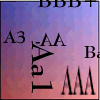

|
Credit Ratings
Everyone is familiar with the symbols that the two credit rating giants—Standard & Poor’s Ratings Group and Moody’s Investors Service—use in their ratings. These symbols have been in widespread use since John Moody introduced the first bond ratings of railroads back in 1909. For issues or issuers of investment-grade quality, S&P assigns the ratings AAA, AA, A, and BBB, while Moody’s uses Aaa, Aa, A, and Baa. (Both agencies introduced rating modifiers in the early 1980’s, S&P using plus and minus signs and Moody’s using 1, 2, and 3). For issues or issuers of non-investment-grade quality, S&P assigns ratings of BB, B, CCC, CC, C, and D, while Moody’s uses Ba, B, Caa, Ca, and C (again with modifiers). Default Risk Since even people on Wall Street can misunderstand the meaning of ratings, the agencies like to emphasize that ratings are informed opinions of credit risk, not currency risk, prepayment risk, interest rate risk or liquidity risk. Ratings are neither guarantees against default nor recommendations to trade certain securities. Who Benefits From Ratings? Issuers with either investment-grade or non-investment grade ratings can broaden their market access and their investor base, they can achieve lower-cost funding, and they can increase their financial flexibility. Investors find ratings to be reliable guides to default risk, assisting them in investment comparisons and sound portfolio management. Regulators like ratings because ratings help promote market efficiency by reducing arbitrage and market volatility based on rumor. Ratings help assure the stability of the financial system. Intermediaries such as the investment banks use ratings to help them plan, price and place securities. Ratings Advisors, such as GIA, benefit because the rating process can be confusing, mysterious and complex for even seasoned issuers. GIA helps issuers understand the process and thereby optimize their ratings. Indirectly, GIA is also helping the rating agencies do their work more efficiently, because an issuer’s presentations to the agencies will be more organized and more focused on key issues, saving time for the agency analysts.
|
